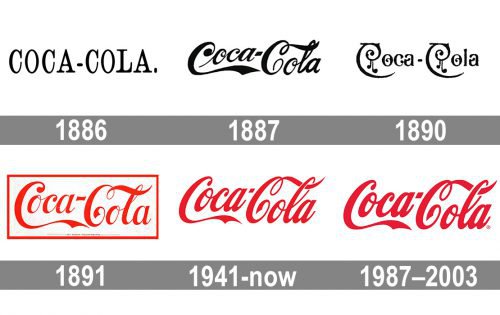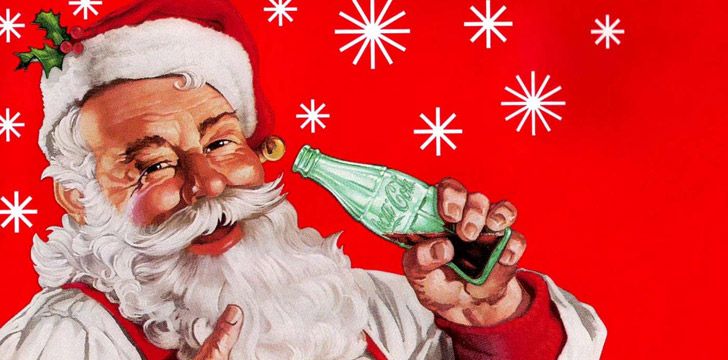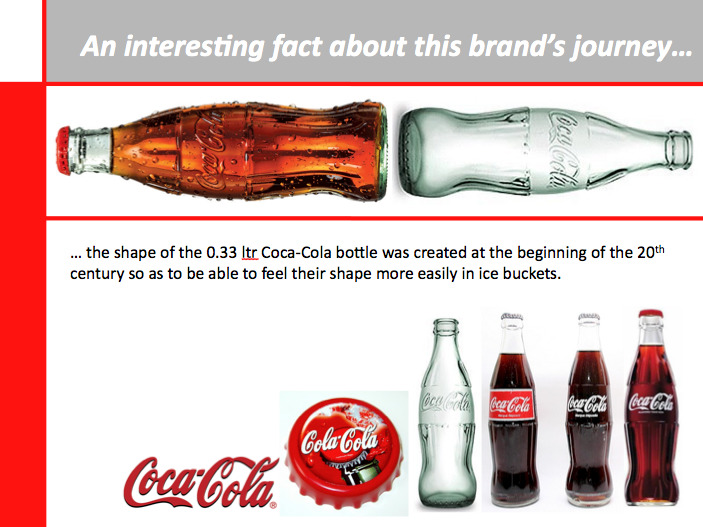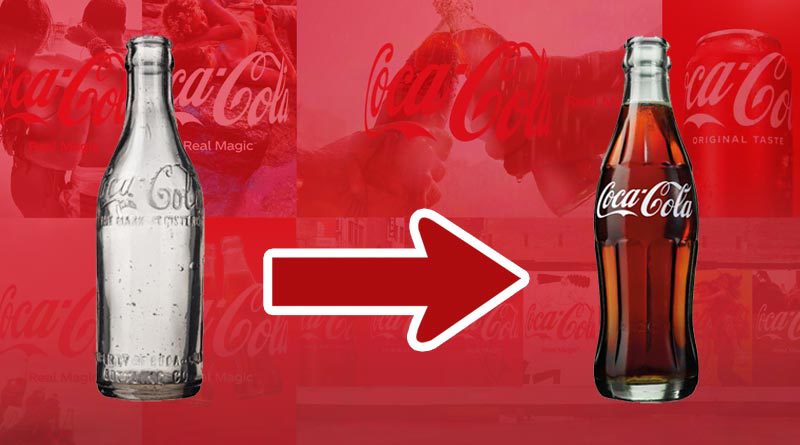How Coca-Cola’s brand storytelling has evolved over the years?
Coca-Cola is one of the world’s most recognizable brands, with a rich history and iconic logo that has remained largely unchanged for over a century. But the way in which Coca-Cola has told its brand story has evolved significantly over the years, adapting to changing consumer tastes, cultural shifts, and advancements in technology and media. In this blog post, we’ll explore how Coca-Cola’s brand storytelling has evolved over the years, from its early advertising campaigns to its current focus on social media and experiential marketing.
How Coca-Cola’s brand storytelling has evolved over the years?
Early Advertising Campaigns

Coca-Cola’s early advertising campaigns were aimed at promoting the product’s taste and health benefits. In the late 1800s, the company’s first advertising efforts were focused on portraying Coca-Cola as a refreshing beverage that could provide relief from common ailments like headaches and exhaustion.
One of Coca-Cola’s earliest advertising slogans was “Drink Coca-Cola – Delicious! Refreshing! Exhilarating!” which was used in a 1905 campaign. In the 1920s, the company began to focus on the quality and purity of its product, using the tagline “The Pause That Refreshes” to promote Coca-Cola as a wholesome and refreshing drink.
Coca-Cola’s early advertising also featured iconic images of the drink, including the famous Coca-Cola logo, which was first introduced in 1887 and has remained largely unchanged ever since. The logo features the company’s name in flowing, cursive script, with a red and white color scheme that has become instantly recognizable around the world.
The Santa Claus Connection

One of the most famous examples of Coca-Cola’s brand storytelling is the company’s connection to the modern image of Santa Claus. In the 1930s, Coca-Cola began to feature images of Santa Claus in its advertising campaigns, portraying him as a jolly, red-suited figure with a white beard and a sack full of Coca-Cola bottles.
Although the modern image of Santa Claus had been popularized in earlier years through various publications, Coca-Cola’s advertising campaigns helped to solidify this image as the definitive representation of Santa Claus in popular culture. The company’s use of Santa Claus in its advertising also helped to create a strong emotional connection between Coca-Cola and the holiday season, as the image of Santa Claus became closely associated with the festive and joyful atmosphere of Christmas.
Today, Coca-Cola’s connection to the modern image of Santa Claus remains an iconic part of the company’s brand storytelling. The image of Santa Claus with a bottle of Coca-Cola has become instantly recognizable around the world and is often associated with the holiday season and the joy of sharing a refreshing drink with loved ones.
The “Real Thing” Era
In the 1960s, Coca-Cola launched a new advertising campaign that became known as the “Real Thing” era. This campaign was designed to emphasize the idea that Coca-Cola was the original and authentic cola drink, and that no other brand could match its quality or taste.
One of the key elements of the “Real Thing” era was the use of catchy slogans and jingles that emphasized the unique qualities of Coca-Cola. For example, the campaign’s signature slogan, “It’s the real thing,” was accompanied by a catchy jingle that became an instant hit and helped to reinforce Coca-Cola’s position as the leading cola brand.
The “Real Thing” era also featured a series of iconic advertising images and characters, including the Coca-Cola polar bear and the famous “hilltop” commercial, which featured a diverse group of people singing the jingle “I’d like to buy the world a Coke.”
Through the “Real Thing” era, Coca-Cola’s brand storytelling focused on the idea of authenticity and quality, emphasizing the company’s position as a leader in the soft drink industry. This approach helped to strengthen Coca-Cola’s brand identity and cement its position as one of the most recognizable and beloved brands in the world.
The “Share a Coke” Campaign
In 2011, Coca-Cola launched the “Share a Coke” campaign in Australia, which soon became a global phenomenon. The campaign involved replacing the Coca-Cola logo on bottles and cans with popular first names, encouraging consumers to share a Coke with friends and family members.
The “Share a Coke” campaign was a huge success, with Coca-Cola experiencing a significant increase in sales and engagement on social media platforms. The campaign was also praised for its innovative approach to personalization and its ability to create an emotional connection with consumers.
In addition to the personalized packaging, the “Share a Coke” campaign also featured a range of advertising materials, including television commercials, billboards, and social media posts. These materials highlighted the emotional connections that people have with Coca-Cola and the importance of sharing special moments with loved ones.
Through the “Share a Coke” campaign, Coca-Cola’s brand storytelling shifted towards a more personal and emotional approach, highlighting the role that the brand plays in bringing people together and creating special memories. This campaign helped to reinforce Coca-Cola’s position as a beloved and iconic brand, while also appealing to younger and more digitally savvy consumers.
Coca-Cola and Social Media
Coca-Cola has also been very successful in using social media platforms as a way to tell its brand story and engage with consumers. The company has a strong presence on platforms such as Facebook, Twitter, Instagram, and YouTube, and regularly posts content that aligns with its brand messaging and values.
One of Coca-Cola’s most successful social media campaigns was the “Share a Coke” campaign mentioned earlier. The campaign encouraged consumers to share photos and stories of themselves sharing a Coke with friends and family on social media, using the hashtag #shareacoke. This helped to create a sense of community and connection among Coca-Cola fans and spread the word about the campaign to a wider audience.
Coca-Cola has also used social media platforms to promote its values and social responsibility initiatives, such as its support for environmental sustainability and diversity and inclusion. The company has created powerful video campaigns and online initiatives that encourage consumers to take action and make a positive impact on the world.
Experiential Marketing and Coca-Cola

Experiential marketing is a type of marketing that focuses on creating memorable experiences for consumers through immersive and interactive campaigns. Coca-Cola has been a leader in this type of marketing, using experiential campaigns to engage with consumers and create lasting connections with its brand.
One of Coca-Cola’s most successful experiential marketing campaigns was the “Happiness Machine” campaign. The campaign involved placing a Coca-Cola vending machine in a public space and surprising consumers with unexpected and fun experiences, such as having the machine dispense flowers, pizza, or even a giant sandwich. The campaign was a huge success and went viral on social media, generating millions of views and shares.
Coca-Cola has also used experiential marketing to create memorable experiences at major events and festivals. For example, at the 2016 Rio Olympics, Coca-Cola created a “Beatbox” installation that allowed visitors to create their own music using Coca-Cola bottles and cans. The installation was a huge hit with visitors and helped to reinforce the brand’s messaging around creativity and fun.
The Future of Coca-Cola’s Brand Storytelling
As Coca-Cola continues to evolve and adapt to changing consumer preferences and trends, the future of its brand storytelling is likely to involve a continued emphasis on authenticity, innovation, and social responsibility.
One trend that Coca-Cola has already begun to embrace is the shift toward healthier beverage options. In recent years, the company has introduced new products, such as Coca-Cola Zero Sugar and Smartwater, in response to changing consumer preferences for lower-sugar and more natural beverages. Coca-Cola’s brand storytelling is likely to reflect this shift towards healthier options, with a greater emphasis on the natural ingredients and health benefits of its products.
Another trend that is likely to shape the future of Coca-Cola’s brand storytelling is the increasing importance of sustainability and social responsibility. Coca-Cola has already taken steps to reduce its environmental impact, such as by using more recycled materials in its packaging and investing in renewable energy sources. In the future, we can expect to see Coca-Cola’s brand storytelling focus more on its commitment to sustainability and social responsibility, and its efforts to make a positive impact on the world.
Coca-Cola’s brand storytelling has evolved significantly over the years, reflecting changes in consumer preferences, cultural trends, and technological advancements. From its early advertising campaigns to its more recent experiential marketing and social media efforts, Coca-Cola has consistently used storytelling to connect with its audience and build a powerful brand identity. Like this post? Don’t forget to check out our other short stories in our Quick Read section

